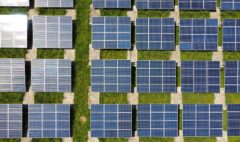Role of Remote Sensing in The Mapping of Oil Spill
June 5, 2022 2022-09-15 0:10Role of Remote Sensing in The Mapping of Oil Spill
Role of Remote Sensing in The Mapping of Oil Spill
Introduction
An oil spill occurs, whenever a type or amount of fossil fuel is released into the ocean. The number and severity of anthropogenic oil spills have increased since the beginning of offshore oil drilling and the transportation of fossil fuels via ships and pipelines. Despite significant increases in safety measures, the overall amount of oil released into the ocean has increased as a result of the aforementioned increased activity. Oil spills can have serious consequences for both aquatic and terrestrial ecosystems. The degree and level of environmental, social, and economic impact are heavily influenced by the composition, quantity, and quality of the oil released, as well as the environment in which the oil was released. The primary environmental effects include but are not limited to, ecology destruction, animal and human habitat loss, and damage to local fishing and other water-based industries.
These effects are frequently transient. However, cleaning efforts are frequently expensive and are frequently abandoned due to the spread of oil in water. Thick oil slicks from a recent spill diffuse quickly in water, making clean-up extremely difficult. As a result, it is critical to gather information on oil thickness and distribution as soon as possible. Previously, space-based data was used to map and monitor oil spills, including the location, extent, and action of the released oil.

Case study: Mauritius
Mauritius is a biodiversity hotspot with a high concentration of plants and animals unique to the region. The Mauritian marine environment is home to 1,700 species including around 800 types of fish, 17 kinds of marine mammals, and two species of turtles. Coral reefs, seagrasses, and mangroves make Mauritian waters extraordinarily rich in biodiversity. An oil spill can be characterized as the coincidental arrival of fluid petrol hydrocarbon into the environmental factors or the climate because of human action. An oil spill is a type of contamination that has a devastating effect on the climate. Research is being conducted on the Mauritius Southeast Coast on 25th July 2020. The Japanese claimed mass transporter MV Wakashio vessel, which conveyed almost 4000 tons of oil, ran on solid land on a coral reef on Mauritius’ southeast coast on 25th July 2020. More than 1000 metric huge loads of fuel have been spilled into the Indian sea contaminating the close-by coral reefs, the encompassing sea shores, and lagoons. The study investigates the Wakashio oil spill by using Sentinel-1 SAR data and Sentinel-2 optical to determine the spill’s progress, compare both the image suitability to the study, and analyze its effects on the coastal ecosystem. The processing of VV polarization images from Sentinel-1’s synthetic-aperture Radar (SAR) C-band obtained on 10 August 2020 revealed the presence and spread of oil spills as dark warped patches. The images of Sentinel-2 data were utilized to detect the oil spill using the threshold anomaly value approach. Sentinel-1 SAR data processing was performed using the Sentinel Application Platform (SNAP) of the European Space Agency (ESA) and Sentinel-2 Optical data processing was performed using QGIS. Field visits were used to validate the satellite-derived results. The Sentinel-2 data confirmed the Sentinel-1 SAR results by demonstrating the existence and spread of oil spills of varying thicknesses. This study revealed the capabilities of Sentinel sensors and the possibility of image processing methods for detecting, monitoring, and assessing the environmental effect of oil spills.
Abbreviation:
GIS: A geographic information system (GIS) is a computer system that generates, maintains, analyses, and maps various types of data. GIS integrates data to a map by combining location data (where objects are) with other forms of descriptive data (what things are like there).
Remote sensing: Remote sensing is the practise of detecting and monitoring an area’s physical features from a distance by measuring its reflected and emitted radiation (typically from satellite or aircraft).
Sentinel: Sentinel is a parts of the European Space Agency’s (ESA) Copernicus earth observation project, which was designed to examine the earth surface. The Sentinel data services’ data is freely available to all users. Sentinel may be used to map land cover changes and monitor the world’s forests. It also gives information on lake and coastal water contamination. Images of floods, volcanic eruptions, and landslides aid catastrophe mapping and aid in humanitarian relief operations.
QGIS Software: QGIS is a cross-platform desktop geographic information system software that is free and open source. It allows customers to view, modify, print, and analyse geographical data.
SNAP: SNAP is a software platform developed by the European Space Agency (ESA) that supports the Sentinel missions. It is made up of numerous modules that may be changed and reused for image processing, modelling, and display of data from earth observation satellites.
Olbgis Consulting firm specializes in GIS services.
Related Posts
Energy GIS Applications
The role of GIS in the energy transition
Search
Categories
Popular Tags
Archives





